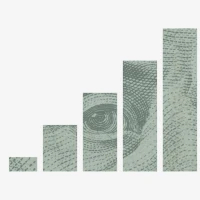In the intricate dance of markets, the twin forces of supply and demand lead the tempo. By understanding and visualizing these fundamental economic principles through supply and demand graphs, anyone from students to seasoned economists can gain a deeper grasp of the market’s heartbeat. Grasping the subtle plays of curves and axes isn’t just academic—it’s a powerful tool for investors, business owners, and policy-makers. Let us embark on a journey to unlock the secrets of markets with masterful graph creation, shedding light on the powerful narratives told by the silent whispers of data points.
The Foundation of Market Analysis: Understanding Supply & Demand
To fully wield the power of graphing in market analysis, one must first ground themselves in the core concepts.
What is Supply and Demand?
Supply and demand are the yin and yang of market economies, representing the relationship between sellers’ goods and services and buyers’ desires and willingness to pay.
- Supply: The quantity of a product or service that the market can offer. It’s often driven by the price, cost of production, technological innovations, and seller expectations.
- Demand: The quantity of a product or service that consumers are willing and able to purchase at various prices. It hinges on consumer preferences, income levels, and the price of substitutes and complements.
Grasping these principles is the first step to master normal distribution graph generator creation that encapsulates the essence of market dynamics.
The Anatomy of a Supply & Demand Graph
A supply and demand graph is a visual representation of how supply and demand levels vary with price. It typically includes:
- Horizontal Axis (X-Axis): Represents the quantity of goods or services.
- Vertical Axis (Y-Axis): Represents the price of the goods or services.
- Supply Curve: An upward-sloping line reflecting increased supply at higher prices.
- Demand Curve: A downward-sloping line indicating that demand falls as prices rise.
- Equilibrium Point: The meeting point of supply and demand curves, signifying market balance.
Diligently charting these elements can reveal market equilibriums, trends, and potential disruptions, which is crucial for decision-making.
Step-by-Step Guide to Crafting Supply & Demand Graphs
Creating precise and insightful [graph dynamics](https://www.icyclest.com/{“id”:1886,“parent_id”:null,“account_id”:204,“name”:“\ud83d\udca1 Innovations”,“slug”:“innovations”,“meta_title”:“Revolutionary Innovations for Cycling Enthusiasts”,“meta_description”:"Discover the latest cutting-edge advancements)s is an art that combines attention to data with clear visualization.
Step 1: Collecting Comprehensive Market Data
Before drawing lines and axes, one must gather relevant data. This might include historical price records, quantities sold, production costs, and consumer income levels. Remember, the quality of your graph theory for beginners hinges on the strength of your data.
Step 2: Setting up Your Axes
Accuracy when charting your axes is vital. Ensure that your x-axis (quantities) and y-axis (prices) are scaled properly to display the data in a clear and non-misleading way. This precision acts as the foundation for your graph of rational functions.
Step 3: Plotting the Demand Curve
Using your data, plot points that represent the quantity demanded at various price levels and connect them with a smooth, downward curve. The demand curve often has a steep slope for necessities and a gentler slope for luxury goods.
Step 4: Plotting the Supply Curve
Now, transition to plotting your supply curve by marking the quantity supplied at different prices. Connect these to form an upward curve. For most goods, the slope should be upward, reflecting increased production as prices rise.
Step 5: Illustrating Equilibrium
Identify the equilibrium point where your supply and demand curves intersect. This coordinates the equilibrium price and quantity, offering a snapshot of the market’s natural resting state.
Step 6: Analyzing Movements and Shifts
Understand that these curves are not static. External factors like technology, policy changes, or shifts in consumer preferences can cause the curves to shift. A keen eye can discern these movements and predict market outcomes.
The Power of Comparative Graphs in Market Prediction
Graphs are not only about presenting existing conditions but also about comparing scenarios. If you’re involved in complex market analysis, juxtaposing multiple supply and demand graphs can provide a granular understanding of potential market scenarios.
The Role of Comparative Graphs
Comparative graphs help analyze:
- How changes in policy might affect market equilibrium.
- The impact of technological advancements on production costs and consumer behavior.
- The influence of market entrants or exits on the overall supply.
Creating a Comparison Chart
To visualize comparative analysis, consider the following elements for effective comparison charts:
- Clearly distinguish between different scenario curves with colors or patterns.
- Highlight key differences and overlaps to draw the reader’s attention.
- Annotate with clear descriptions for each scenario being compared.
Here’s an example format for a basic comparative chart:
| Price($) | Demand (Scenario 1) | Supply (Scenario 1) | Demand (Scenario 2) | Supply (Scenario 2) |
|---|---|---|---|---|
| 5 | 500 | 750 | 300 | 900 |
| 10 | 400 | 800 | 350 | 850 |
| 15 | 300 | 850 | 400 | 800 |
Harnessing Technological Tools for Graph Construction
In today’s digital era, a plethora of tools exists to assist in creating precise and compelling supply and demand graphs. From sophisticated spreadsheet software like Microsoft Excel and Google Sheets to specialized graphical tools like Tableau or Python’s Matplotlib library, the technology at your disposal is more powerful than ever.
Digital Tools Advantages
- Speed: Quickly process and visualize large datasets.
- Accuracy: Minimize human error with built-in formulas and functions.
- Flexibility: Adjust parameters easily to model different scenarios.
- Interactivity: Create dynamic graphs that respond to user interaction, making data exploration intuitive.
Choosing the Right Graphing Tool
When selecting a graphing tool, consider:
- The complexity of data you’re dealing with.
- Your comfort level with the software.
- The need for customization and interactivity in your graphs.
Knowledge into Action: Utilizing Supply & Demand Graphs for Strategic Decisions
A masterful graph is more than just a pretty picture—it’s a decision-making aid that encapsulates complex market dynamics into actionable insights.
For Business Leaders
Business decision-makers can use supply & demand graphs to:
- Gauge production levels to optimize inventory.
- Set pricing strategies to maximize profit.
- Forecast changes in consumer demand and adjust marketing strategies accordingly.
For Investors
Investors can interpret these graphs to:
- Identify lucrative market entry or exit points.
- Predict stock performance based on market conditions.
- Make informed decisions on portfolio diversification.
For Policy-Makers
For policy-makers, these graphs can shed light on:
- Potential impacts of regulation on market behavior.
- Public policy effects on different economic sectors.
- Optimal taxation strategies that balance revenue with market health.
Conclusion
Mastering supply and demand graph creation is akin to translating the rich language of markets into a universal visual code. It empowers one to not just understand but actively anticipate and shape market trajectories. Utilize the principles and techniques discussed here to craft graphs that are not only informative but transformative, leading to strategic decisions that resonate with the ebbs and flows of economic tides.
Remember, in the oceans of market analysis, a well-crafted graph is both your compass and your map, guiding you through the waves of supply and demand to unlock the secrets of markets with confidence and clarity.










